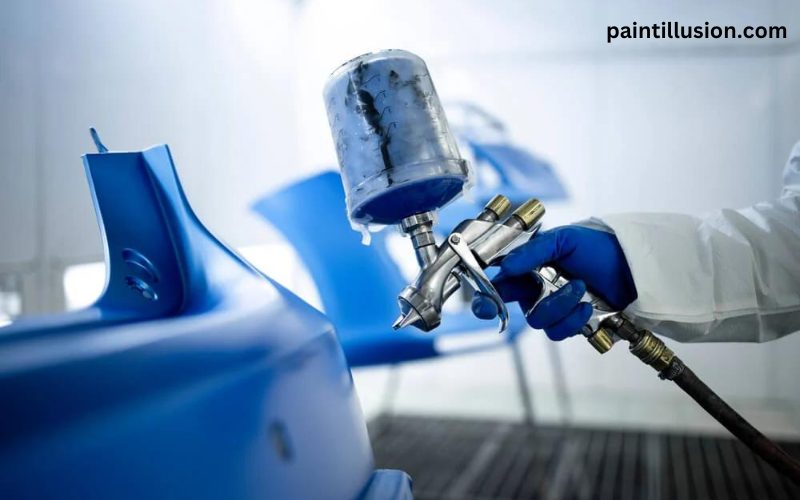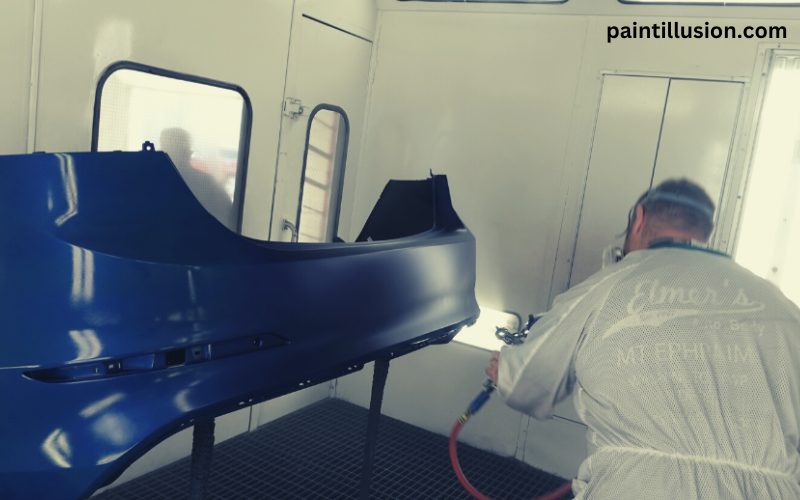When it comes to maintaining the appearance of your car, a fresh coat of Paint a Bumper can work wonders. Whether your bumper has suffered from scratches, dings, or fading color, painting it can give it a new lease on life. However, before you embark on this project, it’s important to understand the factors that affect the cost, the pros and cons of DIY versus professional painting, and additional costs to consider. In this guide, we will explore all these aspects and provide you with tips for saving money on bumper painting.
Factors That Affect the Cost of Painting a Bumper
The cost of painting a bumper can vary depending on several factors. The first and most obvious factor is the size of the bumper. Larger bumpers will require more paint and labor, making the overall cost higher. Additionally, the type of paint used will also impact the price. High-quality automotive paint tends to be more expensive but offers better durability and a smoother finish.
Another factor to consider is the extent of the damage or wear on the bumper. If there are deep scratches, dents, or other imperfections, the bumper may require additional preparation such as sanding or filling before painting. This extra work will increase the overall cost.
Lastly, the location and reputation of the auto body shop will play a role in determining the cost. Shops located in urban areas or with a high demand for their services may charge more for their expertise and convenience.
DIY vs. Professional Painting: Pros and Cons
Before you decide to paint your bumper, it’s essential to weigh the pros and cons of DIY painting versus hiring a professional. DIY painting may initially seem like a cost-effective option, but it requires a considerable amount of time, skill, and equipment. If you’re not experienced in automotive painting, you may end up with unsatisfactory results, leading to a wasted effort and the need to seek professional help anyway.
Professional painting, on the other hand, offers several advantages. Firstly, professionals have the expertise and experience to ensure a high-quality finish. They also have access to professional-grade equipment and materials, which can result in a longer-lasting and more visually appealing paint job. Additionally, most reputable auto body shops offer warranties on their work, providing you with peace of mind.

Average Cost of Painting a Bumper
The average cost of painting a bumper can range from $300 to $1000, depending on the factors mentioned earlier. Smaller bumpers with minimal damage may be on the lower end of the price spectrum, while larger bumpers with extensive damage may cost more to repair and paint.
It’s important to note that this cost typically covers the labor, materials, and paint required for the job. If your bumper requires additional repairs or replacement parts, such as sensors or reflectors, these will come at an additional cost.
Additional Costs to Consider When Painting a Bumper
When budgeting for bumper painting, it’s essential to consider any additional costs that may arise. For example, if your bumper has significant damage that requires repair before painting, this will increase the overall cost. Additionally, some auto body shops may charge extra for color matching or custom paint jobs.
You should also account for the cost of any necessary parts or accessories that need to be replaced, such as clips or fasteners. These small items can add up and impact the overall cost of the project. Lastly, don’t forget to factor in any applicable taxes or fees that may be charged by the auto body shop.
Tips for Saving Money on Bumper Painting
If you’re looking to save money on bumper painting, there are a few tips you can follow. Firstly, consider shopping around and getting quotes from multiple auto body shops. Prices can vary significantly, so comparing estimates will ensure you’re getting the best deal.
Another way to save money is by opting for a less expensive paint option. While high-quality automotive paint offers better durability, there are more affordable alternatives that can still provide satisfactory results. Discuss your options with the auto body shop to find a balance between cost and quality.
Lastly, if you’re confident in your DIY skills, you can attempt to paint the bumper yourself. However, be prepared to invest time and effort into learning the proper techniques and acquiring the necessary equipment. Remember, a poorly executed paint job can end up costing you more in the long run if you need to seek professional help to fix the mistakes.
How Long Does It Take to Paint a Bumper?
The time it takes to paint a bumper can vary depending on several factors, including the extent of the damage, the complexity of the paint job, and the workload of the auto body shop. On average, you can expect the process to take anywhere from a few days to a week.
Keep in mind that this timeframe includes the necessary preparation work, such as sanding, priming, and drying time between coats. Rushing the process can result in poor adhesion and a subpar finish. It’s important to be patient and allow the paint to cure properly for the best results.
Finding a Reputable Bumper Painting Service
When it comes to painting your bumper, it’s crucial to find a reputable auto body shop that specializes in this type of work. Start by asking for recommendations from friends, family, or coworkers who have had positive experiences with bumper painting.
Once you have a list of potential shops, do your research. Check online reviews and ratings to get a sense of their reputation. Look for shops that have experience working on your make and model of car, as they will have a better understanding of the specific requirements.
When you visit the shop, pay attention to their level of professionalism and cleanliness. A well-maintained facility is usually a good indication of their attention to detail and quality of work. Don’t be afraid to ask for examples of their previous work or to inquire about warranties they offer on their paint jobs.
Common Mistakes to Avoid When Painting a Bumper
While painting a bumper may seem like a straightforward task, there are several common mistakes that can occur. One of the most significant mistakes is rushing the preparation process. Properly preparing the bumper by cleaning, sanding, and priming is crucial for achieving a smooth and long-lasting finish. Skipping or rushing these steps can result in paint peeling or chipping prematurely.
Another mistake to avoid is not using the correct paint or materials. Automotive paint is specifically formulated for use on cars and provides the best adhesion and durability. Using regular spray paint or low-quality paint can lead to a poor finish and may not withstand the elements.
Lastly, not following the manufacturer’s instructions for drying and curing times can also lead to issues. It’s important to allow the paint to dry and cure fully before exposing it to water, extreme temperatures, or other potentially damaging conditions.
Conclusion
Painting a bumper can breathe new life into your car’s appearance, but it’s essential to understand the factors that affect the cost, the pros and cons of DIY versus professional painting, and additional costs to consider. By following the tips provided, you can save money on bumper painting while achieving a high-quality and long-lasting finish. Remember to take the time to find a reputable auto body shop that specializes in bumper painting and avoid common mistakes that can compromise the final result. With proper planning and execution, your bumper will look as good as new.

